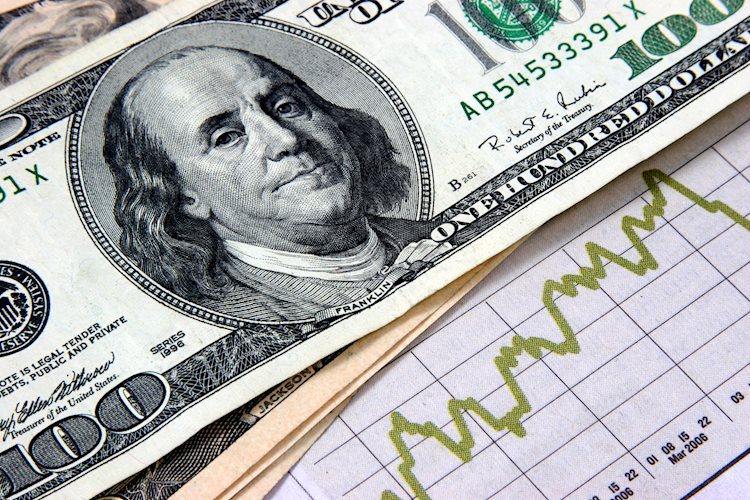- The Federal Reserve’s hawkish monetary stance contributes to rising Treasury yields, reinforcing the US Dollar’s current strength.
- Rumors of a potential national economic emergency declaration bolster safe-haven demand and support the Greenback’s appeal.
- Encouraging labor market figures, including lower jobless claims and steady employment gains, further amplify bullish sentiment.
- FOMC minutes revealed that most members supported December’s cuts but held a hawkish tone.
The US Dollar Index (DXY), which measures the value of the USD against a basket of currencies, gained towards 109.00 on Wednesday, mainly due to strong labor market figures. The Federal Reserve’s (Fed) hawkish shift still supports elevated United States (US) bond yields, favoring the USD bulls. Meanwhile, geopolitical risks and trade war concerns help maintain safe-haven flows, capping any Greenback’s pullback.
Daily digest market movers: US Dollar sees gains as markets assess fresh labor data and FOMC minutes
- US upcoming President Donald Trump may declare a national economic emergency to enact large-scale tariffs, spurring safe-haven bids for the US Dollar.
- Long-term US bond yields continue climbing on heavy supply; the 10-year hovers near 4.70%, while the 30-year approaches 4.93%.
- The Federal Open Market Committee (FOMC) minutes from the December’s meeting revealed that most participants supported a 25 basis point cut but remain cautious, factoring in potential trade and immigration policy changes that could prolong elevated inflation.
- Labor data shine: Weekly initial jobless claims fell to 201,000, beating the 218,000 consensus. Private sector employment rose by 122,000 in December, though below market expectations.
- Automatic Data Processing (ADP) notes a slowdown in hiring and pay gains, but health care leads job creation in the second half of 2024.
- Reports of strong US economic outperformance continue, delaying the market’s Fed cut expectations.
DXY technical outlook: Indicators maintain momentum above key support
The US Dollar Index defended its 20-day Simple Moving Average, confirming underlying bullish momentum. Technical indicators show continued upward traction, yet they are not near overbought territory, suggesting room for additional gains. Any dips may be shallow, with buyers emerging on safe-haven flows and robust yield appeal. Unless a significant shift in sentiment occurs, the DXY looks poised to sustain its constructive bias in the sessions ahead.
Central banks FAQs
Central Banks have a key mandate which is making sure that there is price stability in a country or region. Economies are constantly facing inflation or deflation when prices for certain goods and services are fluctuating. Constant rising prices for the same goods means inflation, constant lowered prices for the same goods means deflation. It is the task of the central bank to keep the demand in line by tweaking its policy rate. For the biggest central banks like the US Federal Reserve (Fed), the European Central Bank (ECB) or the Bank of England (BoE), the mandate is to keep inflation close to 2%.
A central bank has one important tool at its disposal to get inflation higher or lower, and that is by tweaking its benchmark policy rate, commonly known as interest rate. On pre-communicated moments, the central bank will issue a statement with its policy rate and provide additional reasoning on why it is either remaining or changing (cutting or hiking) it. Local banks will adjust their savings and lending rates accordingly, which in turn will make it either harder or easier for people to earn on their savings or for companies to take out loans and make investments in their businesses. When the central bank hikes interest rates substantially, this is called monetary tightening. When it is cutting its benchmark rate, it is called monetary easing.
A central bank is often politically independent. Members of the central bank policy board are passing through a series of panels and hearings before being appointed to a policy board seat. Each member in that board often has a certain conviction on how the central bank should control inflation and the subsequent monetary policy. Members that want a very loose monetary policy, with low rates and cheap lending, to boost the economy substantially while being content to see inflation slightly above 2%, are called ‘doves’. Members that rather want to see higher rates to reward savings and want to keep a lit on inflation at all time are called ‘hawks’ and will not rest until inflation is at or just below 2%.
Normally, there is a chairman or president who leads each meeting, needs to create a consensus between the hawks or doves and has his or her final say when it would come down to a vote split to avoid a 50-50 tie on whether the current policy should be adjusted. The chairman will deliver speeches which often can be followed live, where the current monetary stance and outlook is being communicated. A central bank will try to push forward its monetary policy without triggering violent swings in rates, equities, or its currency. All members of the central bank will channel their stance toward the markets in advance of a policy meeting event. A few days before a policy meeting takes place until the new policy has been communicated, members are forbidden to talk publicly. This is called the blackout period.
